Facilities
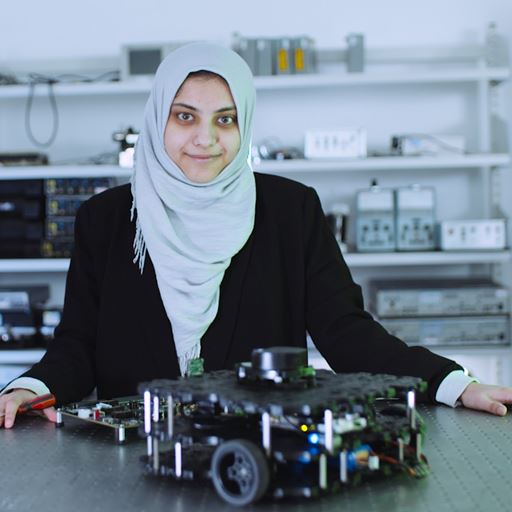
Our School has carried out extensive investment in our facilities to provide a diverse range of specialist laboratories, that ensure that our community has the tools needed to carry out ground-breaking research.
In recent years we have expanded and refurbished our Brain-Computer Interfaces (BCI) lab, and carried out extensive work to enhance our intelligent connected systems flat (iSpace), as well as adding to our robotics arena and communications laboratories.
Our facilities have been generously funded by a mix of grants and donations from prestigious bodies (including the Engineering and Physical Sciences Research Council), strategic initiatives (such as the Science Research Investment Fund), the University, and industry partners.
All our students have access to our dedicated PC Labs, several of which are open 24 hours a day. Our labs are designed to give students the tools they need for their learning, and include dual-boot Windows and Linux machines running specialist software such as Java, Prolog, C++, Perl, Mysql, Matlab, and DB2.
Undergraduate and Masters degree students may have access to our research facilities as part of their teaching for specific modules. They will also use these labs during their final year Capstone project (research project for Masters students), during which they will carry out their own research under the supervision of one of our academic staff.
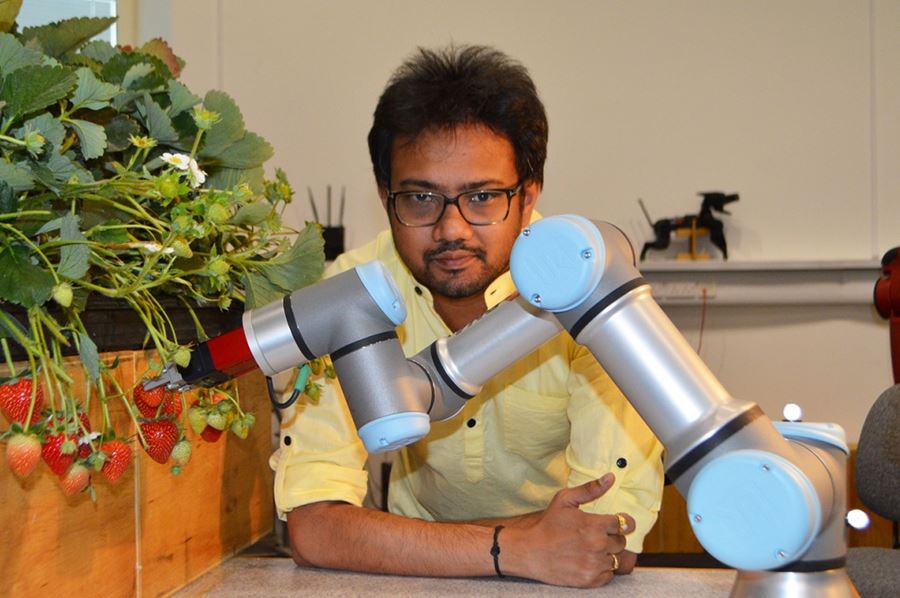
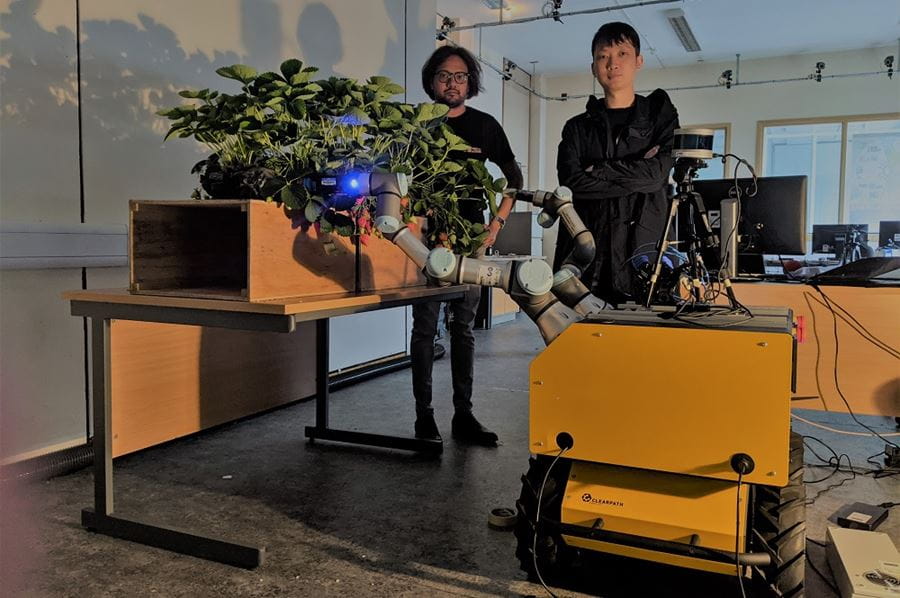
Specialist facilities
Robotics Laboratory
The Robotics Laboratory offers dedicated space for indoor robots. The University has invested over £3M to equip this state-of-the-art laboratory for robotics research.
The laboratory has a floor space of over 100m² and is 9m high. This allows us to accommodate over 50 robotic systems, including:
- wheeled mobile robots,
- flying robots,
- humanoid robots (Pepper and Nao robots),
- intelligent wheelchairs,
- a dual-arm Baxter robot,
- a Universal Robots™ "UR3" robotic arm and a robotic hand with 5 fingers.
In 2018 we received a Strategic Equipment Award which allowed us to build a new agricultural robot comprising:
- Husky unmanned ground vehicle with 100 kg payload carrying 2 Universal Robots™ "UR3" arms,
- Customised cutter/gripper,
- Soft multi-fingered hand, vacuum gripper and a range of sensors (base/wrist cameras, Velodyne Puck Lidar).
The lab includes a VICON optic motion tracking system with 24 infrared cameras. This provides reliable location information so that the performance of the developed robots and navigation algorithms can be accurately evaluated.
The Essex robotics facilities have been deployed in research projects funded by bodies such as the Engineering and Physical Sciences Research Council, including the National Centre for Nuclear Robotics, Innovate UK, and the British Council.
Embedded and Intelligent Systems Laboratory
The Embedded and Intelligent Systems (EIS) Laboratory has state-of-the-art design and prototyping facilities for embedded systems and system-processing architectures.
The lab has been funded through a Research Capital Investment Fund grant by the University. It houses, amongst other equipment:
- very-high-gate-count top-end field-programmable gate array (FPGA) boards,
- processor architectures
- advanced development kits,
- iOS / Android devices,
- sensor and actuators to design real-world prototypes.
Additionally, the EIS@Essex National Centre for Nuclear Robotics (NCNR) Lab has recently expanded with dedicated embedded systems and sensors for extreme environments (thanks to investment by the University, the Engineering and Physical Sciences Research Council (EPSRC) and EU project funds).
This Laboratory was crucial in conducting our research as part of the EPSRC funded RoBoSaS collaboration with NASA Jet propulsion laboratory (JPL), as well as other projects funded by the EPSRC and the EU European Regional Development Fund.
EIS facilities also encompass the iSpace (intelligent flat) testbed for Intelligent Environments, Internet of Things and pervasive computing established from a University investment of £240k.
The iSpace is equipped with a multitude of sensors, speech recognition equipment, augmented reality equipment (such as Microsoft HoloLens), indoor localisation systems, immersive displays, actuators, and computing equipment used in our research.
Brain-Computer Interfaces and Neural Engineering Laboratory
The Essex Brain-Computer Interfaces and Neural Engineering (BCI-NE) Laboratory was founded in 2004 (as Essex BCI lab), and is today one of the largest and best equipped in Europe and the top laboratory for non-invasive BCIs and human cognitive augmentation in the UK.
In 2018-19, the BCI-NE laboratory moved to a new and larger facility and has now access to about 100 square meters of laboratory space. Substantial investments have been made by the university to remodel the facility and acquire new equipment.
The lab is equipped with:
- Three electrically and acoustically shielded experiment rooms to conduct basic neuroscientific and BCI experiments and a robotic-guided transcranial magnetic stimulation (TMS) system.
- Mobile electroencephalogram (EEG) recording systems.
- Multiple state-of-the-art research grade EEG systems.
- Multi-channel surface electroencephalogram (sEMG) systems.
- Multiple other biosignal measurement systems.
- Near infrared spectroscopy (NIRS) systems.
- Eye tracking systems.
- Virtual Reality kits.
- Motorised medical treatment chairs.
- Motorised wheelchairs.
- Robotic arms.
- Functional electrical stimulation units.
- Several electrophysiological sensors, and computer cluster and backup storage systems.
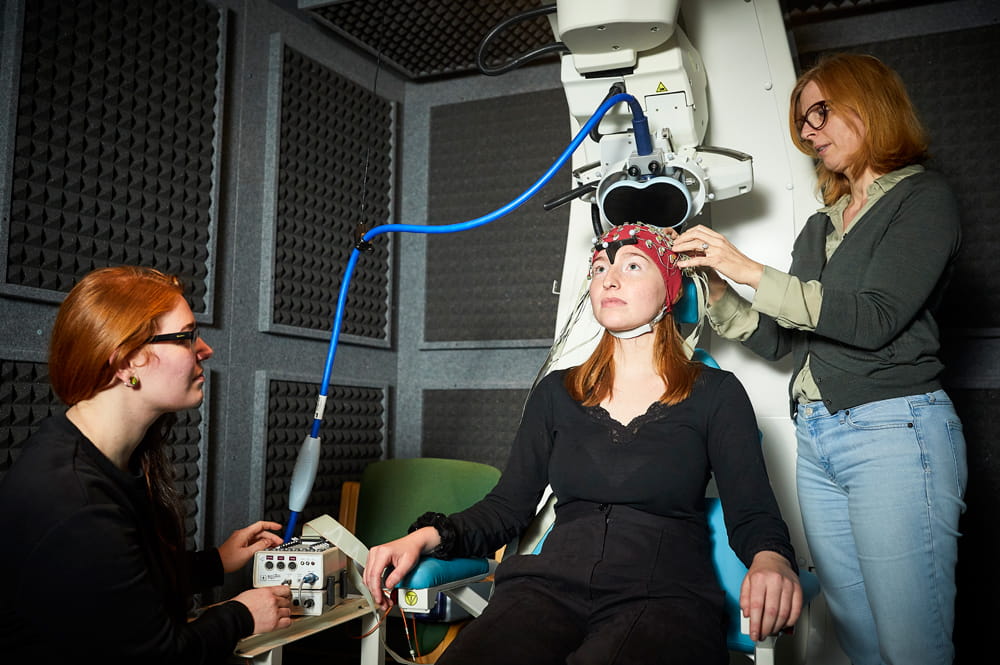
Communications and Networks Facilities
RF & Microwave Research Laboratory
The RF & Microwave Research Laboratory enjoys modern equipment for developing devices and systems to 67 GHz, including:
- several scalar and vector network analysers,
- signal sources,
- spectrum analysers with external mixers,
- power meters,
- an atomic force microscope,
- a probe-station with thermal control,
- a test fixture,
- mm-wave antenna radiation pattern measurement,
- design workstations with Advance Design System (ADS) and CST software.
The equipment was mainly obtained through Engineering and Physical Sciences Research Council (EPSRC) grants and Science Research Investment Fund (SRIF) funding and has been used in research such as an EPSRC-funded project on Liquid Crystal Based Beam Steerable Planar Antennas for 60 GHz Wireless Networks and Full duplex radios.
Optoelectronics Laboratory
The Optoelectronics Laboratory houses:
- Lasers,
- detectors and optical components for optical spectroscopy of semiconductor devices from IR to UV wavelengths,
- various cryostats and kits for electronic transport measurements in semiconductor devices from T=1.3K to 300K, and electric fields up to 250 kV/cm,
- time resolved optical spectroscopy measurements with 100 picosecond resolution, as well as a clean room and micro-fabrication facility.
Much of this laboratory was established by industrial equipment donations from Nortel and BT and has been used in projects funded by the Engineering and Physical Sciences Research Council, and EU.
Access Networks Laboratory
The Access Networks Laboratory (ANL) has state-of-the-art wireless and system measurement tools. These include:
- An Anritsu 67 GHz VNA,
- a Rhode and Schwarz 67 GHz harmonic spectrum analyser,
- Two Anritsu 67 GHz synthesizers,
- a LeCroy 110 GHz sampling oscilloscope and a Tektronix 50GHz bandwidth 5G signal analyser,
- An 8k UHDTV Ethernet-based video system with a high-end GPU-based decompressor,
- Two server-class 40 GbE PCs and ADS and CST design workstations,
- 40 Gbit/s digital error analyser.
The facility has been used to conduct multiple research projects funded by bodies such as the European Commission as part of the "Seventh Framework" Programme (FP7).
Network Convergence Laboratory (NCL)
The Network Convergence Laboratory (NCL) maintains a well-equipped research network test bed that consists of electrical and optical core networking technologies and heterogeneous wireless access networking technologies across the University campus and surrounding areas, covering LTE, 28GHz, 4K/8K video facilities, and software-defined networking (SDN).
In addition to hosting several planetLab nodes NCL is also connected to Global Environment for Network Innovations (GENI) in the USA via openFlow switches, and is the host to an enterprise SAN, a blade cluster of 70+ CPUs.
The testbed is also a home to an edge computing cluster, implemented by openStack and supporting mobile task offloading. This cluster is integrated with the NCL software-defined LTE/pre-5G testbed (using USRPs).
Our researchers have utilised these facilities in various EU and Engineering and Physical Sciences Research Council-funded research projects, including several funded by the EU's Horizon 2020 programme.
Network Multimedia Laboratory (NML)
The Network Multimedia Laboratory (NML) operates as an interdisciplinary facility with a focus on research and development for efficient deployment of ultra-high-definition multimedia applications over networks.
Its facilities include a set of 4K, 3D projectors, a set of high-resolution audio equipment, and a set of 8K projectors. Each is connected locally to a cluster of high-performance servers for video rendering and to the outside world via 10 Gigabit Ethernet and high-speed optical fibres.
Natural Language and Information Processing Laboratory
Members of our Artificial Intelligence group use the Natural Language and Information Processing (NLIP) laboratory for work on this important area of research.
Equipment in the NLIP Laboratory includes:
- two high performance servers specifically reserved for text and image processing research projects,
- a number of large-scale multi-lingual commercial datasets,
- image capture equipment,
- Deep Trekker DTG3 remotely operated vehicle,
- Delta WASP 3D printer used for surveying and conservation research by the Marine Technology Research Unit.
NLIP projects carried out by our academics include 3D modelling for marine surveying of chalk reefs, and ImageCLEFcaption.
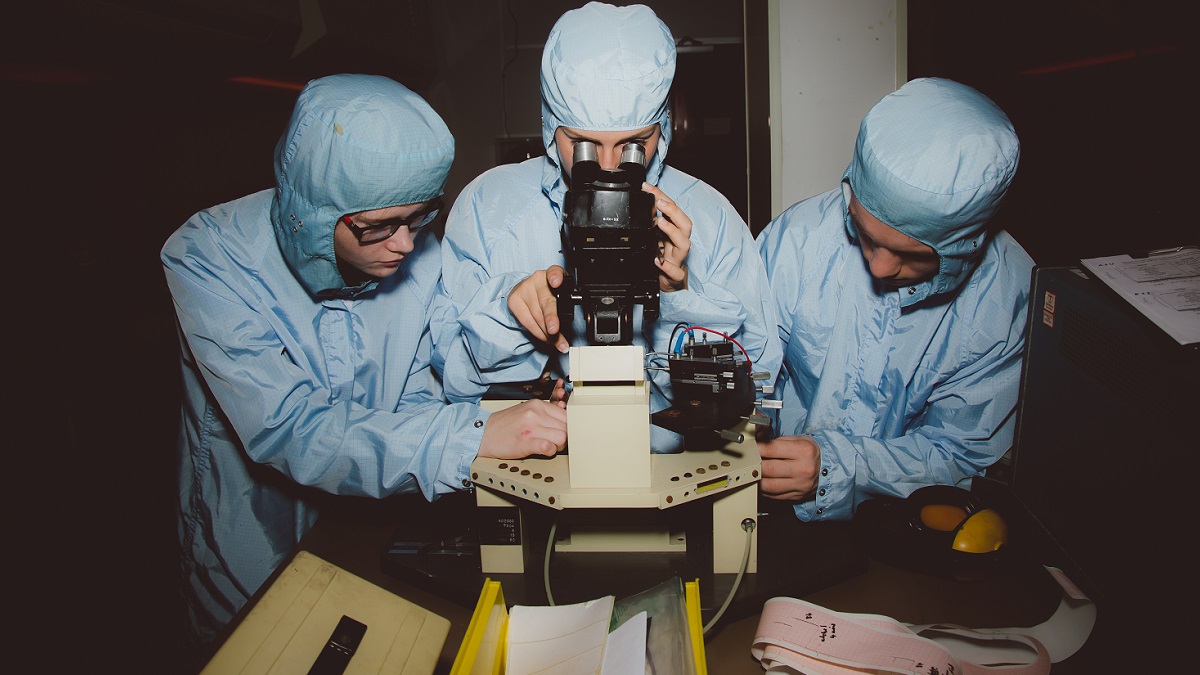
Additional Facilities
Printed circuit milling facility
A facility to manufacture prototype printed circuit boards is essential for an electronics school, both for research and for student projects. In the past many departments have used a wet etching process, whereby unwanted areas of copper are etched away by corrosive chemicals. This is the same process used for mass production, as it is relatively quick. However, it is also environmentally undesirable.
The method currently employed by our School uses a computer controlled milling machine, which creates isolation channels around tracks and devices. Larger areas of copper can also be removed to give a traditional look by using the appropriate tools. The milling machine also has the advantage of being able to drill multiple holes automatically, eliminating the lengthy process of drilling manually.
Semiconductor cleanroom
The cleanroom has the essential equipment needed to create semiconductor devices such as light emitters and receivers from novel wafer structures. Electrical connections are made with gold wires thinner than a human hair using wire bonders and other bonding techniques used by worldwide semiconductor manufacturers.
The devices made in the facility may have etched features with dimensions smaller than a micrometre. Thin film contacts and waveguides for the devices are deposited by a vacuum coating system. The contact metals (gold and dopants like germanium, tin, magnesium and zinc) are annealed to make the ohmic and Schottky contacts needed for devices like MESFETs.
UK Data Archive
Staff at the University have access to the UK Data Archive, which houses the UK’s largest collection of datasets in social sciences and humanities.
These datasets are important for the School’s work in machine learning and data analysis, as well as growing research in the area of big data and text analytics.
CERES
Academics in our School have access to the University’s High-Performance Computing cluster “CERES”.
The cluster has 1008 processing cores provided by servers with a mix of Intel E5-2698 and Intel Gold 5115 processors, and between 512Gb and 1.5Tb RAM each. Storage is provided by a set of storage nodes providing 440Tb of storage. There are also 24 NVIDIA GTX and RTX Series GPU cards.

We have an international reputation for the outstanding quality of our research which covers areas such as artificial intelligence, robotics, and brain-computer interfaces. In the most recent UK Research Excellence Framework, we were placed 9th in the UK for research impact in computer science (Grade Point Average, REF 2021)





